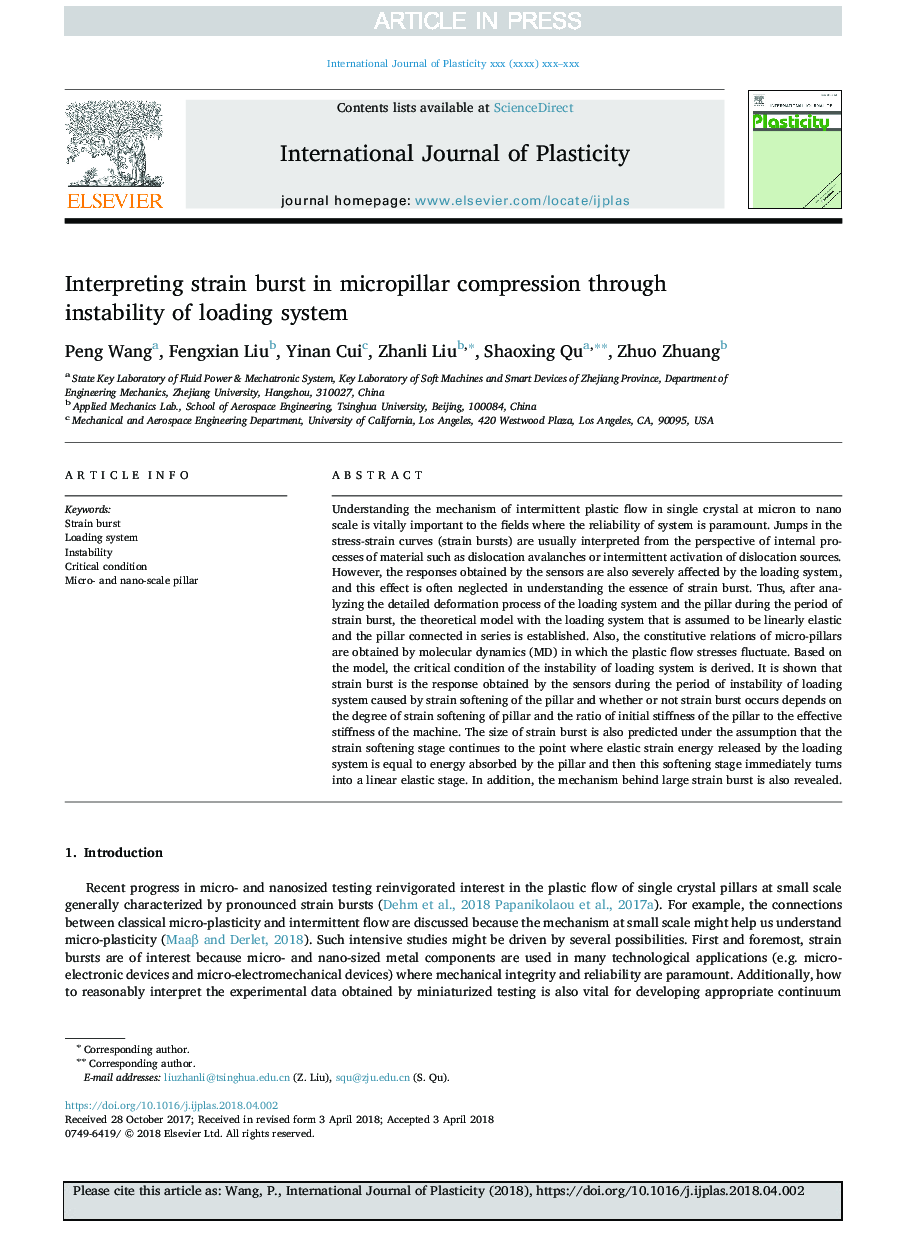| Article ID | Journal | Published Year | Pages | File Type |
|---|---|---|---|---|
| 7174791 | International Journal of Plasticity | 2018 | 14 Pages |
Abstract
Understanding the mechanism of intermittent plastic flow in single crystal at micron to nano scale is vitally important to the fields where the reliability of system is paramount. Jumps in the stress-strain curves (strain bursts) are usually interpreted from the perspective of internal processes of material such as dislocation avalanches or intermittent activation of dislocation sources. However, the responses obtained by the sensors are also severely affected by the loading system, and this effect is often neglected in understanding the essence of strain burst. Thus, after analyzing the detailed deformation process of the loading system and the pillar during the period of strain burst, the theoretical model with the loading system that is assumed to be linearly elastic and the pillar connected in series is established. Also, the constitutive relations of micro-pillars are obtained by molecular dynamics (MD) in which the plastic flow stresses fluctuate. Based on the model, the critical condition of the instability of loading system is derived. It is shown that strain burst is the response obtained by the sensors during the period of instability of loading system caused by strain softening of the pillar and whether or not strain burst occurs depends on the degree of strain softening of pillar and the ratio of initial stiffness of the pillar to the effective stiffness of the machine. The size of strain burst is also predicted under the assumption that the strain softening stage continues to the point where elastic strain energy released by the loading system is equal to energy absorbed by the pillar and then this softening stage immediately turns into a linear elastic stage. In addition, the mechanism behind large strain burst is also revealed.
Related Topics
Physical Sciences and Engineering
Engineering
Mechanical Engineering
Authors
Peng Wang, Fengxian Liu, Yinan Cui, Zhanli Liu, Shaoxing Qu, Zhuo Zhuang,
